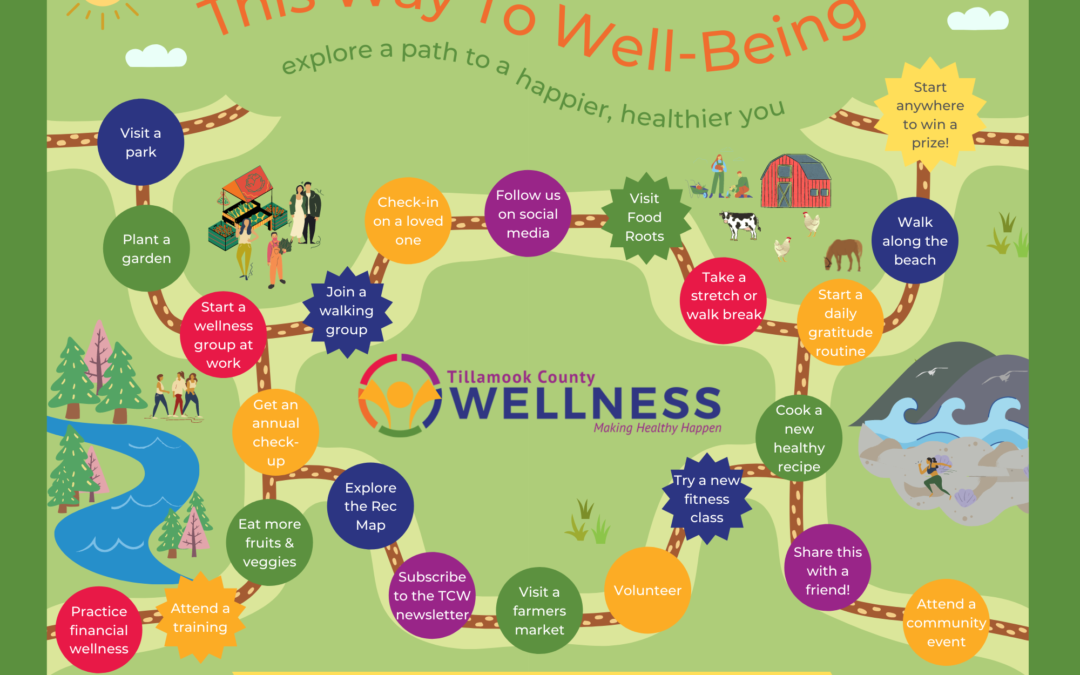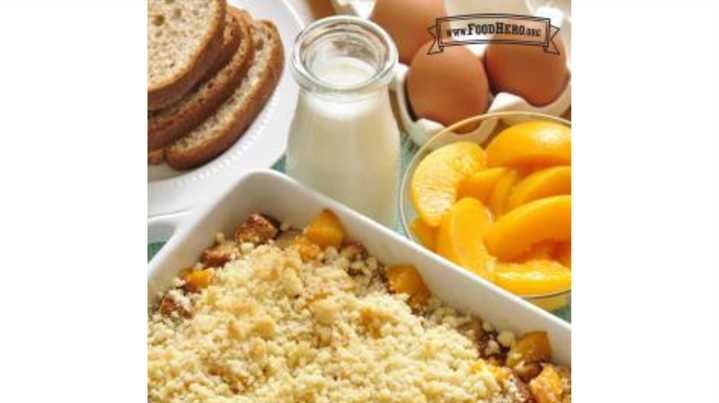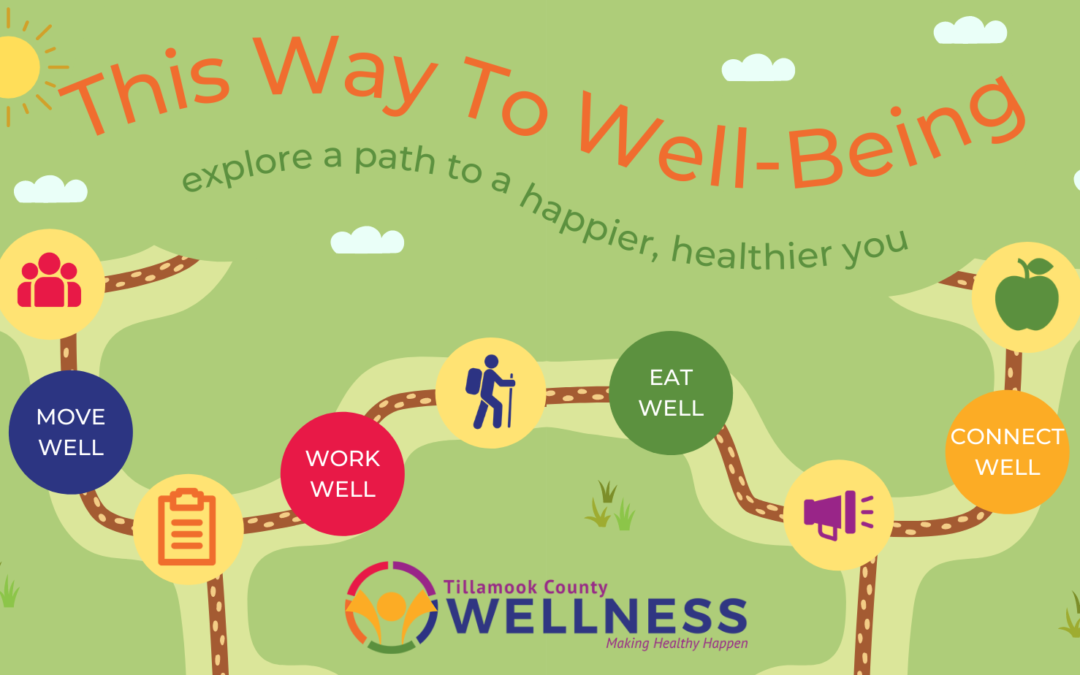
by Guest | Apr 13, 2022 | Recipes
Prep Time: 5 minutes
Cook Time: 20 minutes
Ingredients
Directions
- Wash hands with soap and water.
- Place a single layer of eggs in a saucepan. Add cold water to cover the eggs by at least 1 inch. Heat over high heat just until the water comes to a full boil.
- Take the pan off the heat and cover with a lid or plate. Leave eggs in the hot water. Time depends on egg size: medium – 9 minutes; large – 12 minutes; extra large – 15 minutes
- Immediately drain eggs. Serve warm, or cool completely under cold running water or in ice water. Refrigerate within 2 hours of cooking. Use peeled eggs within 2 days or refrigerate in the shell for up to a week.
Notes
Tips for easier peeling:
- Refrigerate the eggs for 7-10 days before cooking. This gives time for the two membranes inside the shell to separate slightly.
- Let eggs cool after cooking.
- Roll the egg gently on the counter until the shell has small cracks all over.
- Start peeling at the large end.
- Hold the egg under cold running water to help loosen the shell.
Photo and Recipe Source: https://www.foodhero.org/recipes/perfect-hard-cooked-eggs

by Guest | Apr 6, 2022 | Archive, Being Well
When you think of the word “wellness”, what comes to mind? For some, images of green juice smoothies and marathons might flash through your mind. But the idea of wellness acknowledges that there is much more to our state of being than just our physical health. Wellness is not just the absence of disease, but something that evolves over time as we strive to live our lives fully. As pointed out by the University of Maryland, “Wellness is fueling your body, engaging your mind, and nurturing your spirit.”
So what exactly does this look like? The answer is a bit different for everyone. There is no “wrong” path to wellness – any steps towards a healthier, happier life are valuable and worthwhile, no matter how small.
The good news is that taking the first step doesn’t need to involve training for a marathon. In fact, there are plenty of options for fun and engaging activities that also benefit your health, whether that’s physically, mentally, or emotionally. For inspiration, we have created a map of local activities here in Tillamook County to help you get started and continue down your own unique journey towards a happier, healthier you. Visit the “This Way to Well-Being” page on our website to see the full map, along with details for each of the stops.
In honor of the idea that well-being is much more than just our physical health, we have collected ideas for exploring different aspects of our lives. You’ll see that our map is color-coordinated:
- The green “eat well” stops represent ideas for enjoying locally produced food, whether this is visiting Food Roots in downtown Tillamook or trying your hand at growing your own produce this spring.
- The orange “connect well” stops offer ideas around prioritizing self-care and connecting with those around us, such as volunteering in the community or calling to check-in on a loved one.
- The blue “move well” stops represent inspiration for exploring the trails, beaches, and parks that are abundant throughout Tillamook County.
- The red “work well” stops acknowledge that we spend much of our time in the workplace and therefore this space is just as important to our health as our personal lives.
- And finally, the purple stops offer a few ways to connect with Tillamook County Wellness as you continue on your path!
It’s worth noting that these activities are often intertwined and therefore the benefits can actually multiply in effect. For example, you can connect with others while also enjoying the outdoors by joining one of the TCW Walking Groups. These groups meet weekly at a range of times and locations across the county (drop-ins welcome!) Click here to find a group near you this spring.
And as an extra perk, participating in activities along the map gives you the chance to win prizes. Anyone in Tillamook County is welcome to participate and individuals will have the opportunity to win more than one prize through any of the following:
- Joining an in-person activity designated by a star shape on the map, such as walking groups, fitness classes, local workshops, or visiting Food Roots
- Posting about your wellness map on Instagram or Facebook and tagging @TillamookCountyWellness
- Sharing your feedback about your experience with activities on the map through our quick online survey found on the map webpage.
You can find the full map on our website, or at your local Tillamook County library branch or another participating location, such as the North County Recreation District (NCRD), Tillamook County Family YMCA, Kiawanda Community Center, and Food Roots. Participants will be eligible to win prizes from April through October 2022 so let us know about your experience through social media, our survey, or by joining an event! Check out our website for details about each stop on the map and reach out to us with any questions at info@tillamookcountywellness.org. We hope that this map can serve as a jumping off point in exploring the fun and engaging opportunities here in Tillamook County for leading a happier, healthier life.
Other wellness questions? Email us at info@tillamookcountywellness.org. For more local health and wellness information, visit www.tillamookcountywellness.org or follow Tillamook County Wellness on Facebook and Instagram.

by Guest | Mar 31, 2022 | Recipes
Prep Time: 10 minutes
Cook Time: 45 minutes
Ingredients
- 8 cups bread cubes; try whole-grain bread
- 2 cups sliced or chopped fruit, fresh, frozen, or canned and drained
- 4 eggs, slightly beaten
- 1 cup lowfat milk
- 2 teaspoons vanilla
- ¼ cup sugar
- ¼ cup margarine or butter, softened
- ¼ cup sugar
- ½ cup flour, all-purpose or whole-wheat
Directions
- Wash hands with soap and water.
- Lightly oil an 8×8-inch baking dish or 2-quart casserole. Add bread cubes and fruit.
- In a medium bowl, blend eggs, milk, vanilla and sugar. Pour over bread and fruit. Stir gently to wet all bread with egg mixture. Wash hands after handling raw eggs.
- Cover and refrigerate until all liquid is absorbed, about 30 minutes or overnight.
- Just before baking, remove casserole from refrigerator. Preheat oven to 350 degrees F.
- Make the topping: In a small bowl, combine the softened margarine, sugar, and flour with a fork until crumbly.
- Uncover the casserole and sprinkle topping over fruit. Bake until completely set and starting to brown, about 35 to 40 minutes or until the internal temperature reaches 160 degrees F on a food thermometer. A longer baking time is needed when the dish is chilled overnight. Serve warm.
- Refrigerate leftovers within 2 hours.
Notes
This is a great recipe for using up extra bread.
Variations:
- For the fruit, try peaches, pears, berries or diced apples.
- Lightly sprinkle with cinnamon or other spices such as nutmeg, ground cloves, allspice or cardamom at the end of step 2.
- Try topping with a spoonful of yogurt when serving.
Photo and Recipe Source: https://www.foodhero.org/recipes/fruity-french-toast-casserole

by Guest | Mar 30, 2022 | Move Well
Hello from the southern part of wonderful Tillamook County! The Kiawanda Community Center has been around for 25 years and has served our community in a number of ways. We are the host site for NW Senior Services, which serves “Meals on Wheels” to seniors all the way up to Astoria and will hopefully begin to have in-person senior lunches during the week. We are also a lovely event venue for private gatherings like weddings and reunions as well as a practical choice for public events like town halls and candidates forums. We rent offices to community partners like the Pacific City- Nestucca Valley Chamber, Nestucca, Neskowin and Sand Lake Watershed Council and PNW Tea Treehouse. We also love to share our space with local fitness instructors to offer weekly classes to locals and visitors. Check out what kind of fitness classes we have going on:
Zumba. Every Tuesday, Sally Marin hosts a Zumba session from 5:00pm to 6:00pm. Complete with music and an energetic and supportive group, this zumba class is fun, improves coordination and tones your entire body. Bring your water bottle and comfortable shoes to join in the fun. $5/session.
Fit and Fab. Fit and Fab happens every Tuesday and Thursday and is suitable for those new to exercising. This class focuses on dynamic cardiovascular exercise, strength training, balance, and flexibility. $5/session
Tai Chi. Tai Chi is offered Thursdays at 10:30am and is proven to decrease stress, anxiety and depression as well as improve your mood. $10/student/month
Yoga. Yoga with Dawn is a favorite among locals and is forutanetly offered four times a week: Monday, Friday, Saturday at 9:00am and Wednesdays at 5:30pm. Vinyasa yoga is “a playful dance between breath and movement. It is a practice of strength, flexibility and balance. The practice of yoga benefits the body, mind and spirit. In this class we seek to feel good in our own bodies. Celebrating with movement in the rhythm of the breath.” This class has also created a community of yogis who even had a session at the Van Gogh exhibit in Portland! $10/session
Walking Wonders. Last but not least, our weekly walking group has been steadily active (even during the pandemic!). The Pacific City Walking Wonders meet every Monday, Wednesday, and Friday at 10:00 am at the Kiawanda Community Center Parking Lot. The group walks for about an hour and takes different routes throughout the community. People walk at different speeds so everyone is invited, regardless of their fitness level. There are no dues or fees for the group. Everyone is invited to come get some exercise, meet new people, and enjoy our beautiful community. Free
Check out our website https://kiawanda.com/community/ to learn more about classes offered at the Kiawanda Community Center. We want our community to be healthy, connected and thriving and believe that the classes offered here are a great step in that direction.
AUTHOR: Kiawanda Community Center Board
Other wellness questions? Email us at info@tillamookcountywellness.org. For more local health and wellness information, visit www.tillamookcountywellness.org or follow Tillamook County Wellness on Facebook and Instagram.

by Guest | Mar 30, 2022 | Being Well
Health is most often measured in numbers – our blood pressure, blood sugar (or A1c), cholesterol, weight, waist circumference, and so on. While these are important measures and they do tell us a lot about our risk for diseases (which we now know to be preventable by as much as 80%!), moving these numbers is harder than we ever imaged. The further away we get from our “ideal” numbers, the harder it is to achieve them.
This has caused a shift in how we approach health and well-being. While those numbers are important, they may be secondary to other key factors which we also know contribute to a person’s health; such as how we feel about ourselves, how equipped we are in life to pursue and attain our goals and how well we are able to maintain healthy relationships with others.
Interestingly, our biometric scores and our social and mental well-being are in fact interconnected. How we live our lives, what we eat, how we move our bodies, how much we sleep, the choices we make around our entertainment, our friend groups and use of tobacco, alcohol and other addictive substances, all determine those health numbers. Because each of those choices is serving a purpose in our lives, it can be very difficult to change those behaviors. Instead of “giving things up,” we may have more success adding something we value even more.
By focusing on positive, social actions we can take in our daily lives, we may actually have a better chance of moving our health numbers in the right direction. Exploring activities that bring us a sense of joy and fulfillment can be very motivating and contagious. It’s a great way to meet new people, build self-esteem and grow in our personal and professional lives. Our peer groups and associations influence our behaviors. When we join activities where people are modeling healthier behaviors, we are more likely to adopt them by default.
It is important to recognize that the path to wellness looks different for each person. We all have different interests that motivate us as well as different challenges or barriers that prevent us from sticking to healthy habits. By looking at the things we want to do, we stand a much better chance of getting on – and staying on – a path to well-being.
To help you navigate what that path might look like, we have developed a handy map of fun activities. We have many local options for investing in ourselves, connecting with others, exploring the outdoors, enjoying locally produced foods and more. You may even think of some things we haven’t included. The point is, there is no wrong path as long as it is leading toward a healthier, happier you.
As an added bonus, visiting points along the map gives you a chance to win prizes, such as movie tickets, hydro flasks, county and state parks passes, Tillamook County Fair tickets, gift cards to local businesses, and more. Winners will be selected at random from group events and activities April 6th through October 31st. This program is free and everyone is welcome to participate.
You are automatically eligible to win prizes for in-person activities such as walking groups and hikes, fitness classes, visiting Food Roots and attending local workshops. Sometimes we just can’t make classes or other activities fit into our busy schedules. Don’t worry – we have you covered too. Share a photo or post about what you’ve discovered along your wellness journey and tag us @TillamookCountyWellness on Facebook or Instagram to be entered to win. (You can also enter to win through a quick participation survey on our website here).
Are you ready to start exploring?
- Grab your free Way to Well-Being map at participating locations*, your local Tillamook County library branch or download it online (*Participating locations include: North County Recreation District (NCRD), Tillamook County Family YMCA, Kiawanda Community Center, and Food Roots.)
- Decide which activities you will explore and mark them on your calendar
- Invite friends and family to join you
- Share your discoveries at the Tillamook County Wellness Facebook & Instagram pages
- Explore your way to wellness from April through October 2022 to be eligible to win prizes
- Questions? Contact us at info@tillamookcountywellness.org
Annual Walking Group Launch April 6th
Let’s get things kicked off with our annual Walking Group launch on April 6th! Explore local walking routes and trails while meeting new people. Groups meet weekly, rain or shine. Drop-ins are welcome. Check out the full schedule here. Can’t find a group that works for your schedule? Feel free to start your own!
AUTHOR: Michelle Jenck, Director of Community Well-Being at Adventist Tillamook
Other wellness questions? Email us at info@tillamookcountywellness.org. For more local health and wellness information, visit www.tillamookcountywellness.org or follow Tillamook County Wellness on Facebook and Instagram.





